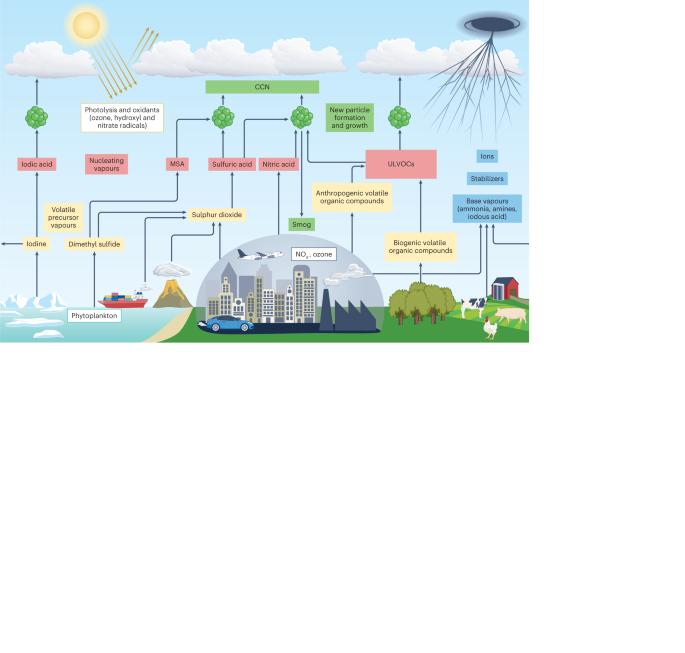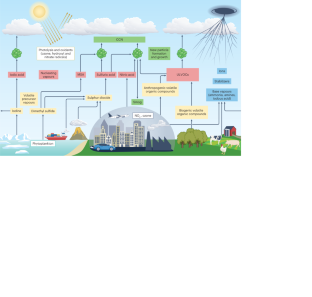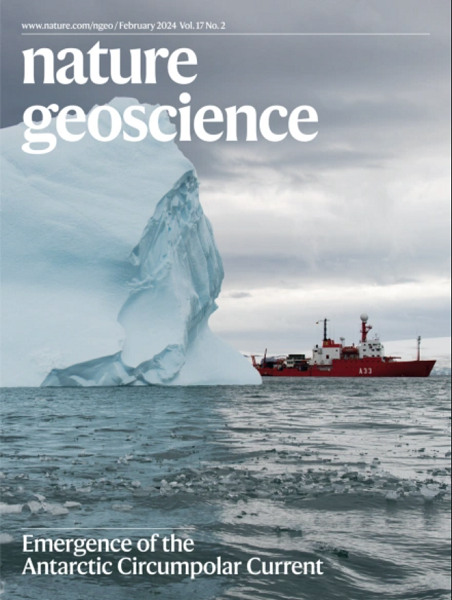Atmospheric new particle formation from the CERN CLOUD experiment
IF 15.7
1区 地球科学
Q1 GEOSCIENCES, MULTIDISCIPLINARY
引用次数: 0
Abstract
Aerosol particles in the atmosphere profoundly influence public health and climate. Ultrafine particles enter the body through the lungs and can translocate to essentially all organs, and they represent a major yet poorly understood health risk. Human activities have considerably increased aerosols and cloudiness since preindustrial times, but they remain persistently uncertain and underrepresented in global climate models. Here we present a synthesis of the current understanding of atmospheric new particle formation derived from laboratory measurements at the CERN CLOUD chamber. Whereas the importance of sulfuric acid has long been recognized, condensable vapours such as highly oxygenated organics and iodine oxoacids also play key roles, together with stabilizers such as ammonia, amines and ions from galactic cosmic rays. We discuss how insights from CLOUD experiments are helping to interpret new particle formation in different atmospheric environments, and to provide a mechanistic foundation for air quality and climate models. The CLOUD experiment provides important insights into new particle formation in different atmospheric environments.


欧洲核子研究中心云实验产生的大气新粒子
大气中的气溶胶颗粒对公众健康和气候产生了深远的影响。超细颗粒通过肺部进入人体,并可以转移到基本上所有的器官,它们是一种主要但鲜为人知的健康风险。自前工业化时代以来,人类活动大大增加了气溶胶和云量,但它们在全球气候模型中仍然存在不确定性和代表性不足。在这里,我们综合了目前对大气新粒子形成的理解,这些理解源于欧洲核子研究中心云室的实验室测量。尽管硫酸的重要性早已得到承认,但可冷凝的蒸汽,如高度氧化的有机物和碘氧代酸,以及氨、胺和银河宇宙射线离子等稳定剂,也发挥着关键作用。我们讨论了云实验的见解如何有助于解释不同大气环境中新粒子的形成,并为空气质量和气候模型提供机制基础。
本文章由计算机程序翻译,如有差异,请以英文原文为准。
求助全文
约1分钟内获得全文
求助全文
来源期刊

Nature Geoscience
地学-地球科学综合
CiteScore
26.70
自引率
1.60%
发文量
187
审稿时长
3.3 months
期刊介绍:
Nature Geoscience is a monthly interdisciplinary journal that gathers top-tier research spanning Earth Sciences and related fields.
The journal covers all geoscience disciplines, including fieldwork, modeling, and theoretical studies.
Topics include atmospheric science, biogeochemistry, climate science, geobiology, geochemistry, geoinformatics, remote sensing, geology, geomagnetism, paleomagnetism, geomorphology, geophysics, glaciology, hydrology, limnology, mineralogy, oceanography, paleontology, paleoclimatology, paleoceanography, petrology, planetary science, seismology, space physics, tectonics, and volcanology.
Nature Geoscience upholds its commitment to publishing significant, high-quality Earth Sciences research through fair, rapid, and rigorous peer review, overseen by a team of full-time professional editors.
 求助内容:
求助内容: 应助结果提醒方式:
应助结果提醒方式:


